#villa della farnesina
Explore tagged Tumblr posts
Text
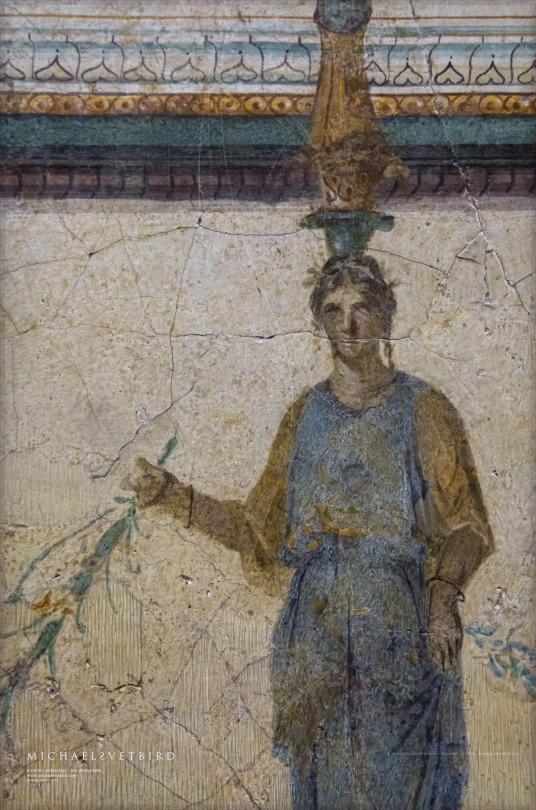


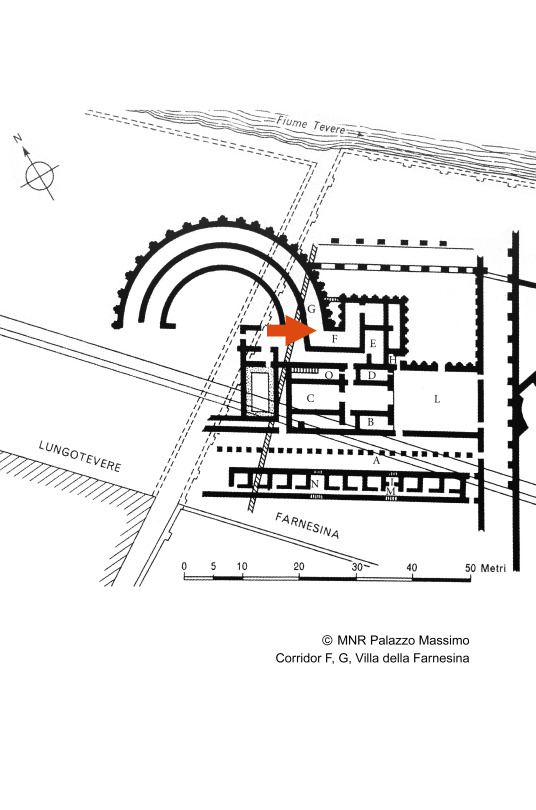
FEMALE Figure Wall Painting: A fresco from Villa della Farnesina, Rome [Corridor F, G] Discovered | Excavated in 1879 "in the garden of the Renaissance Villa Farnesina" [modern Trastevere area] Augustan age, 1 BC - 1 AD.
Palazzo Massimo, Museo Nazionale Romano | MNR PM [2nd Floor, Sala V.] • Web : https://museonazionaleromano.beniculturali.it/en/palazzo-massimo • FB : https://www.facebook.com/MNRomano • IG : @museonazionaleromano • TW : @MNR_museo
MNR PM | Michael Svetbird phs©msp | 06|23 6200X4100 600 [I., II.] The photographed object is collection item of MNR PM, photos are subject to copyrights. [non commercial use | sorry for the watermarks]
#rome#roman#palazzo massimo#museo nazionale romano#massimo#villa della farnesina#roman villa#female figure#fresco#frescoes#mural#roman art#ancient painting#antiquity#archaeology#archeologia#ancient#ancient rome#ancient world#ancient culture#museology#museum#antiquities#mythology#heritage#art history#archaeology art#archaeology photography#museum photography#michaelsvetbird
71 notes
·
View notes
Photo

PRIMA PAGINA Il Resto Del Carlino di Oggi giovedì, 02 gennaio 2025
#PrimaPagina#ilrestodelcarlino quotidiano#giornale#primepagine#frontpage#nazionali#internazionali#news#inedicola#oggi carlino#nazionale#imola#villa#mila#bologna#notte#paura#ragazzino#legato#rapina#iniziativa#parten#della#pace#cecilia#sala#farnesina#teheran#detenzione#chiesto
0 notes
Text





Frescoes from the Villa della Farnesina (1st century BC) From the House of Marcus Agrippa and Julia, daughter of Augustus
Palazzo Massimo alle Terme, National Museum, Rome, Italy.
1K notes
·
View notes
Photo
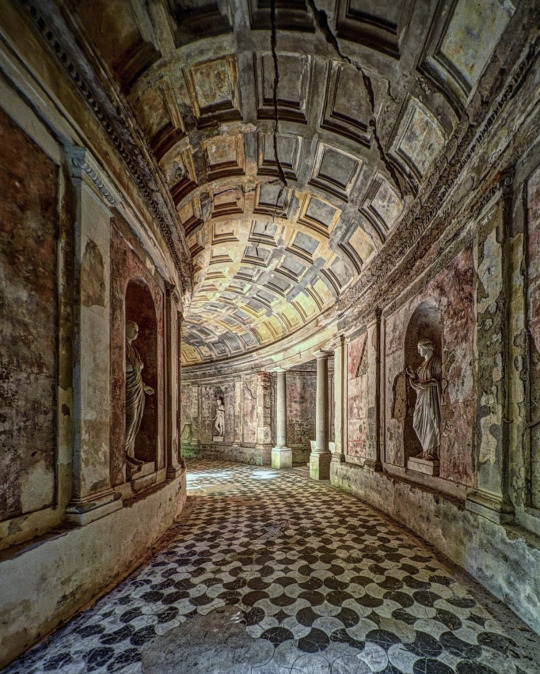
Il Criptoportico della Reggia di Caserta Secondo un progetto del 1787, Carlo Vanvitelli concepì il Criptoportico, in modo da illudere gli ospiti dei regnanti, di trovarsi in un’area di scavi archeologici. Sotto una volta a cassettoni, squarciata da finte crepe e falsi crolli, sono esposte statue d’origine realmente archeologica, provenienti dalla Collezione Farnese e dalla Villa Farnesina di Roma. La galleria si affaccia sul Bagno di Venere, dando vita a una delle più affascinanti vedute del Giardino Inglese. Foto di @mimmo.schiavo
825 notes
·
View notes
Text

Fresco depicting an erotic scene, from the cubiculum D of the villa della Farnesina 1st century AD Palazzo Massimo alle Terme, Rome
11 notes
·
View notes
Text




🥰Il capolavoro del rinascimento di Raffaello a Roma: Villa farnesina a Trastevere.
✴️Costruita fra il 1505 e il 1511, Villa Farnesina è uno dei luoghi imperdibili d Roma,
✅️ Commissionata da un banchiere di Siena, Agostino Chigi, che la fece costruire con stanze maestose volute dal ricco banchiere per uno strabiliante banchetto nuziale, suggello d’ amore per la sua sposa. Deve il suo nome al suo secondo proprietario, il cardinale Alessandro Farnese.
🎨L’interno della villa sorprende per la sua ricca decorazione con gli affreschi d’importanti artisti, come Raffaello, Sebastiano del Piombo o Peruzzi.
🎨Al primo piano sono particolarmente interessanti gli affreschi della Sala di Galatea, una delle opere più importanti di Raffaello.
🎨Prestando attenzione al soffitto si possono contemplare i dipinti d’astrologia che mostrano la posizione delle stelle nel giorno della nascita di Chigi, il primo proprietario della villa.
🎨Al piano superiore si trova una delle stanze più belle della villa, la Sala delle Prospettive, che basa la sua decorazione sull’illusione ottica creata dagli affreschi, che mostrano la città di Roma attraverso le colonne di marmo.
✅Villa Farnesina ci mostra tutto il lusso e l’opulenza dell'aristocrazia italiana del Rinascimento.
✅🥰L’edificio non ha grandi dimensioni e il suo esterno non è troppo appariscente.
L’importanza della sua visita risiede negli affreschi presenti in tutta la villa
DOMENICA 8 SETTEMBRE ORE 11:30 la nostra visita guidata per partecipare sms oppure whatsApp al 328 2842788 ⬇️⬇️
🌐 www.laboratorio104.it/tours/6667/
6 notes
·
View notes
Text

Il Criptoportico della Reggia di Caserta
Secondo un progetto del 1787, Carlo Vanvitelli concepì il Criptoportico, in modo da illudere gli ospiti dei regnanti, di trovarsi in un’area di scavi archeologici.
Sotto una volta a cassettoni, squarciata da finte crepe e falsi crolli, sono esposte statue d’origine realmente archeologica, provenienti dalla Collezione Farnese e dalla Villa Farnesina di Roma.
La galleria si affaccia sul Bagno di Venere, dando vita a una delle più affascinanti vedute del Giardino Inglese.
2 notes
·
View notes
Text
L'opera del giorno: il Trionfo di Galatea di Raffaello
L’opera che vi propongo oggi è l’affresco del Trionfo di Galatea che Raffaello realizzò nella loggia di Villa Chigi a Roma, più nota come la Farnesina. Fu il facoltoso banchiere Agostino Chigi a commissionare il lavoro al celeberrimo pittore urbinate per decorare parte della loggia che un tempo si apriva sul Tevere: le grandi arcate infatti furono chiuse solo nel Seicento. Chigi aveva fatto���

View On WordPress
#affreschi#antonietta bandelloni#art#artblogger#arte#artepertutti#arttraveller#bellezza#capolavoro#dipinti#english#Il dipinto del giorno#Raffaello#rinascimento#Roma
2 notes
·
View notes
Text
Raffaello, scoperto l'uso del blu egizio anche in Amore e Psiche
Nuove indagini scientifiche sugli affreschi di Villa Farnesina a Roma hanno svelato la presenza di blu egizio (il più antico pigmento artificiale della storia) sulla volta della Loggia di Amore e Psiche, affrescata nel 1518 da Raffaello e dalla sua bottega. La scoperta si deve al Centro linceo di ricerca sui beni culturali Villa Farnesina (Cerif) diretto dal socio linceo Antonio Sgamellotti, che…
View On WordPress
0 notes
Text
The Hidden Treasures Of Rome
Rome, the capital of Italy, is a city steeped in history, art, and culture. It's no surprise that it's often referred to as an open-air museum due to the wealth of hidden treasures it holds. While many tourists flock to iconic sites like the Colosseum, Roman Forum, and the Vatican, there are numerous lesser-known gems that deserve exploration. Here are some hidden treasures of Rome:
Basilica of San Clemente: This church is a historical layer cake. On the surface, it appears as a beautiful medieval church, but beneath it, there are earlier Christian and even ancient Roman structures. Descend through the layers to explore Rome's history.
Galleria Sciarra: Tucked away in a small alley near the Trevi Fountain, this Art Nouveau gallery features stunning frescoes and intricate decorations that are often overlooked by tourists.
Aventine Keyhole: On top of the Aventine Hill, you'll find the Priory of the Knights of Malta. Peering through the keyhole in its imposing door reveals a perfectly framed view of St. Peter's Basilica.
Villa Doria Pamphilj: This vast park is Rome's largest public park and is often overlooked by tourists. It's a peaceful place to escape the city's hustle and bustle, with walking paths, fountains, and hidden statues.
Catacombs of Priscilla: While the Catacombs of Callixtus and San Sebastiano are more famous, the Catacombs of Priscilla are equally fascinating and less crowded. They contain early Christian frescoes and burial chambers.
Capuchin Crypt: Beneath the Church of Santa Maria della Concezione dei Cappuccini, you'll find a macabre but artistically arranged display of the bones of Capuchin monks. It's a unique and eerie experience.
Villa Farnesina: This Renaissance villa is a masterpiece of Italian art and architecture. It's home to beautiful frescoes by Raphael and other renowned artists but is often overshadowed by the Vatican museums.
Monti Neighborhood: Located between the Colosseum and Termini Station, Monti is a charming, bohemian neighborhood filled with artisan shops, cozy cafes, and narrow cobblestone streets.
Appian Way: Explore the ancient Appian Way, one of the most important Roman roads. It's lined with ancient tombs, ruins, and peaceful countryside. The Catacombs of San Callisto and the Church of Domine Quo Vadis are notable stops along the way.
Villa Torlonia: Once the residence of Mussolini, this villa now serves as a public park with neoclassical buildings, beautiful gardens, and a museum dedicated to the villa's history.
Palazzo Spada: This 16th-century palace is home to an optical illusion by Borromini. The palace's courtyard seems much longer than it is due to a cleverly designed perspective gallery.
Ponte Fabricio: Known as the oldest Roman bridge in Rome, it connects Tiber Island to the Trastevere district and provides beautiful views of the Tiber River.
These hidden treasures of Rome offer a glimpse into the city's rich history, art, and culture beyond the well-known tourist attractions. Exploring these lesser-known sites can provide a more intimate and authentic experience of the Eternal City.
0 notes
Text
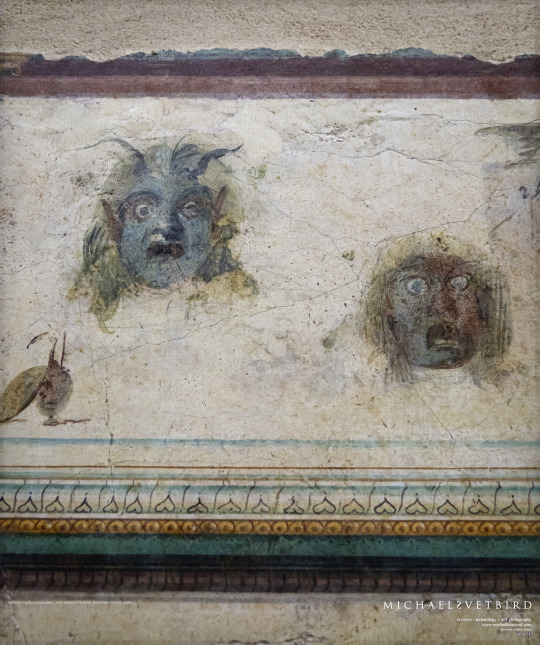
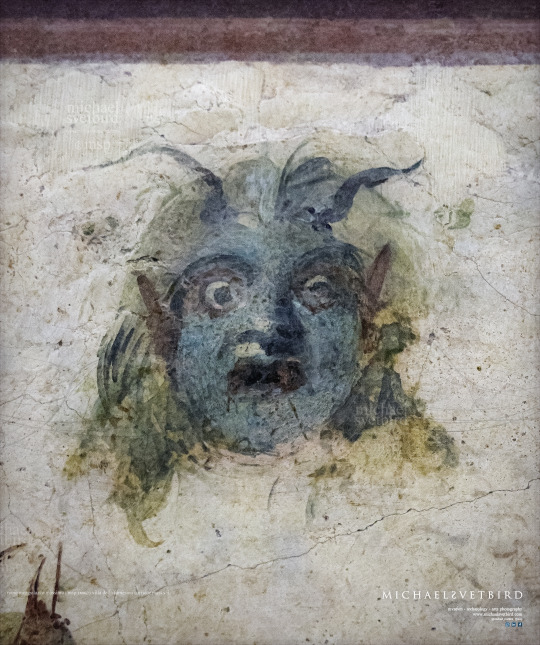


HAPPY HOLIDAYS 👻 2 Masks or Faces-?.. :]] fresco painted on the walls of Villa della Farnesina [Corridor F, G], Excavated in 1879 "in the garden of the Renaissance Villa Farnesina" [modern Trastevere area, Rome] 1 BC - 1 AD.
Palazzo Massimo, Museo Nazionale Romano | MNR PM [2nd Floor, Sala V.] • Web : https://museonazionaleromano.beniculturali.it/en/palazzo-massimo • FB : https://www.facebook.com/MNRomano • IG : @museonazionaleromano • X : @MNR_museo
MNR PM | Michael Svetbird phs©msp | 06|23 4900X4100 600 [I.] The photographed objects are collection items of MNR PM, photos are subject to copyrights.
.
#rome#romans#palazzo massimo#museo nazionale romano#massimo#villa della farnesina#roman villa#fresco#mask#scary face#wall painting#frescoes#roman art#ancient painting#antiquity#archaeology#ancient#ancient rome#ancient world#ancient culture#museology#museum#antiquities#mythology#heritage#art history#art photography#archaeology photography#museum photography#michaelsvetbird
53 notes
·
View notes
Text
29 giu 2023 19:33
UN LETTORE ESPERTO D'ARTE CI SCRIVE: “C’È QUALCOSA CHE NON TORNA QUANDO SI PARLA DELL’ALTRA EREDITÀ DI BERLUSCONI. A DETTA DI SGARBI, BERLUSCONI AVREBBE ORIENTATIVAMENTE VENTIMILA QUADRI. VALORE IPOTIZZABILE, SECONDO SGARBI, DIECI MILIONI. POI I GIORNALI NE CITANO ALCUNI: UN TIZIANO CHE RAFFIGUREREBBE UN EREDE MEDICI… E GIÀ QUESTO DA SOLO ANDREBBE ALL’ASTA SU PER GIÙ PER QUELLA CIFRA. AD ESSO SI AGGIUNGE LA “GIOCONDA NUDA” ATTRIBUITA A BERNARDINO LUINI, IL CHE È IMPOSSIBILE POICHÉ…
Riceviamo e pubblichiamo:
C’è qualcosa che non torna quando si parla dell’altra eredità di Berlusconi. A detta di Sgarbi, a detta sua, Berlusconi avrebbe orientativamente ventimila quadri, molti comprati al telefono in televendita. Valore ipotizzabile, secondo Sgarbi, dieci milioni. Poi i giornali ne citano alcuni: un Tiziano che raffigurerebbe un erede Medici… e già questo da solo andrebbe all’asta su per giù per quella cifra.
Ad esso si aggiunge – negli articoli – la “Gioconda nuda” attribuita a Bernardino Luini, il che è impossibile poiché tale pezzo sarebbe quello della Collezione Primoli poi alla Farnesina e se fosse il cartone – addirittura attribuibile a Leonardo – quello è al Museo di Chantilly. Quindi il cav avrà al massimo una brutta copia che, in quanta nuda, gli sarà parsa meglio di quella vestita… ma lasciamo stare Luini!
Poi si cita il Canova di Villa Gernetto, ma la stele funeraria in bassorilievo di Canova che stava a Villa Gernetto non è mai appartenuta a Berlusconi, perché fu spicconata prima, finì a Palermo dove rischiò di essere venduta all’estero. Sgarbi ha identificato un Annigoni, ma questo non è che costi un granché…
Dunque, stando così le cose, né Canova, né Luini e, probabilmente, nemmeno Tiziano poiché se Berlusconi avesse ventimila quadri del genere altro che dieci milioni!!!
Se invece la collezione vale dieci milioni è perché stiamo parlando più o meno di copie o scuole o attribuzioni generose. Oppure non sono ventimila. Insomma, tutte e tre insieme le cose non possono essere vere.
Lettera firmata
0 notes
Video
STEFANO FAKE & THE FAKE FACTORY - GUSTAV KLIMT - IMMERSIVE ART EXPERIENCE from the fake factory on Vimeo.
Stefano Fake is an Italian artist and video designer who creates installations using video projections, films, photographs, sculptures, computer graphics and interactive technologies. He is a pioneer and one of the main contemporary exponents of Immersive Art, which aims to sensorially immerse the viewer within the work of art itself. Graduated in Political Science in Milan, followed Masters in directing in Madrid, Los Angeles and New York. From 1997 to 2007 he moved to Florence and created the virtual sets for the Krypton Theater Company. In 2001 he founded The Fake Factory, a studio specialized in Immersive Art, Projection Art and Videomapping. In just a few years, this laboratory becomes a point of reference in the context of digital and immersive art at a national and international level, participating in the creation of numerous projects: immersive exhibitions, video mapping, architectural light installations, video production, video scenography for theatres, fashion, visual environments for museums, galleries and cultural events, production of multi-sensory works, video installations, video art works. In 2005 he made one of his first 3D videomappings (architectural video projections that redesign the facades of buildings with optical illusions), this technique will be reused several times by The Fake Factory: Bastioni di Porta Venezia, Piazza Campidoglio Rome, Castello Sforzesco Milan, Ponte Vecchio, Carrara marble quarries, Palazzo del Senato Milan, Basilica of Santo Spirito Florence, Villa Ephrussi de Rothschild, Teatro della Pegola Florence, Stazione Leopolda, Palazzo Marino, Palazzo Corsini, Opera di Firenze, Palazzo della Farnesina, Condeduque Madrid. In 2006 he began exhibiting the Immersive Mirror Rooms, immersive environments created with video projections and reflective surfaces. Since 2010 he has been collaborating with the Italian Cinema Orchestra to bring film soundtracks to the world through multimedia concerts. Since 2015 he has been creating Immersive Exhibitions in Italy and in the world, reinterpreting the works of artists of the past with digital languages and technologies. His works (The Italian Beauty, Caravaggio Experience, Klimt Experience, Colors Art Experience, Monet Experience and the French Impressionists, Modigliani Art Experience, Leonardo da Vinci Body Immersion, Leonardo & Warhol The Genius Experience, Inside Magritte, Bach Experience) define the format internationally, thanks to an unprecedented success with audiences and critics (+ 5 million visitors overall in the period 2015-2022). Since 2019 he has been the creator and artistic director of the FARNESINA DIGITAL ART EXPERIENCE project, in collaboration with the Italian Ministry of Foreign Affairs, with the aim of producing, exhibiting and communicating Italian digital art in the world. Websites: stefanofake.art / thefakefactory.art / immersiveexperience.art / immersivemirrorroom.art / fakeartist.art
#ImmersiveArt #ArteImmersiva #ImmersiveArtExperience #ImmersiveExperience #stefanofake #thefakefactory #ImmersiveMuseum #esperienzaimmersiva #immersiveinstallation #immersiveexhibition #ArtImmersion #videomapping #FakeMirror #MirrorRoom #ImmersiveMirrorRoom #mostraimmersiva #ProjectionArt #ProjectionMapping #Videomapping #DigitalArt #DigitalArtExhibition #ImmerseYourselfInArt #InsideArt #ImmersionRoom #experienciainmersiva #experienciamultisensorial #newmedia #newmediaart #contemporaryart #instalacióninmersiva #videoart #visualart
0 notes
Text

Cratete e Ipparchia era rispettivamente marito e moglie. I Cinici contestava il matrimonio, ma il loro rappresentava un rovesciamento di tutti i valori di quell'istituzione. Nonostante fosse il figlio dell'uomo più ricco di Tebe, Cratete visse in povertà, divenne discepolo di Diogene il Cinico e, a sua volta, il maestro di Zenone (il fondatore dello Stoicismo). Secondo Diogene Laerzio fu soprannominato "apritore di porte" per la cattiva abitudine di introdursi in casa d'altri senza bussare al solo scopo di offrire massime e consigli
#Storia della filosofia#Filosofia#Filosofi#Filosofia cinica#I Cinici#Socratici#Socratici minori#Cratete#Ipparchia#Cratete e Ipparchia#Matrimonio#Dipinto#villa farnesina#pillole di filosofia#Diogene Laerzio#Vita dei filosofi
3 notes
·
View notes
Photo




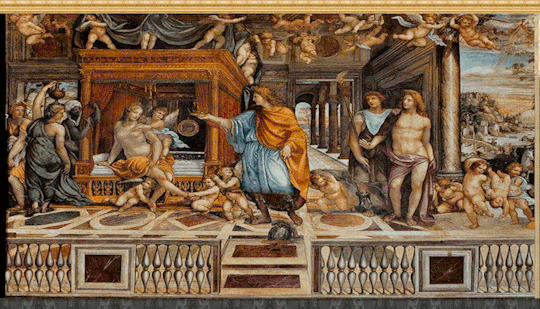
VILLA FARNESINA: SALA DELLE NOZZE
This is my final take on the Villa Farnesina Walls, in this case is the bedroom, painted also by Baldassare Peruzzi with scenes from the life of Alexander the Great, as it was imposible to get a good view towards the window’s wall I have made them myself using the drapery from the previous post and two pantings from the Prado Museum about The continence of Scipio painted by Amico Aspertini around the time the villa was decorated.
The principal panels are created for a room of 7x6 but on the images I have decorated a bigger room using the drapery walls to get a 9x7 room. As you can see, in the left wall panel there is a fireplace that is bigger than those on the game but it works great with @thejim07 fireplace with lions (here). For the rest of the room I have used the amazing furniture created by @thesensemedieval that works amazing for the renaissance air that I wanted to create.
In this case the wallpaper works on the 3 sizes but take into account that on the medium and smaller version it will get resize and in some parts it can get weird.
For the big one I recommend using @felixandresims Florence doors and Versailles windows and for the medium size the Murano rejal door conversion from Ideasigns by DaerOn (sims4designs.blogspot.com) works great. But as always I am sure you will be able to find something even better!
DOWNLOAD - Simfileshare
You can get the rest of the wallpapers from villa Farnesina here:
- Sala della Galatea
- Sala delle Prospettive
- Sala del Fregio
If you want to support me, you can buy me a coffee in my Ko-Fi page: here
Please tag me in your builds if you use any of my creations. I love to see your incredible work!
248 notes
·
View notes
Photo

Roman stucco - Casa della Villa Farnesina
* 30s/20s BCE
* photo by William Henry Goodyear, before 1923
* Palazzo Massimo
source: William Henry Goodyear, Public domain, via Wikimedia Commons
27 notes
·
View notes